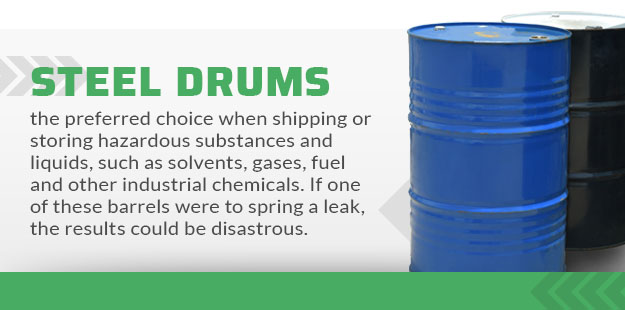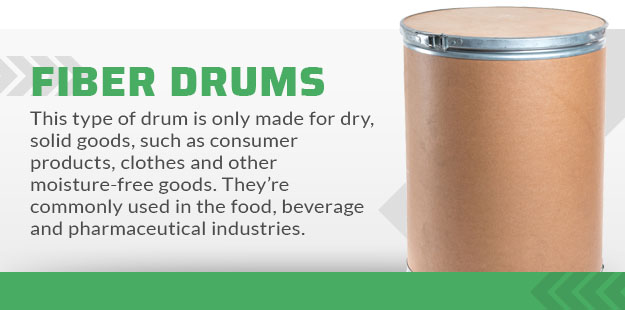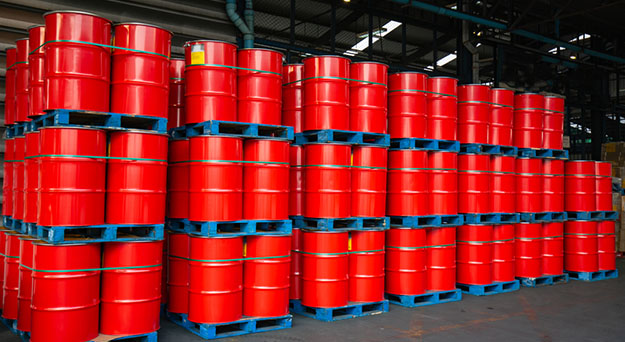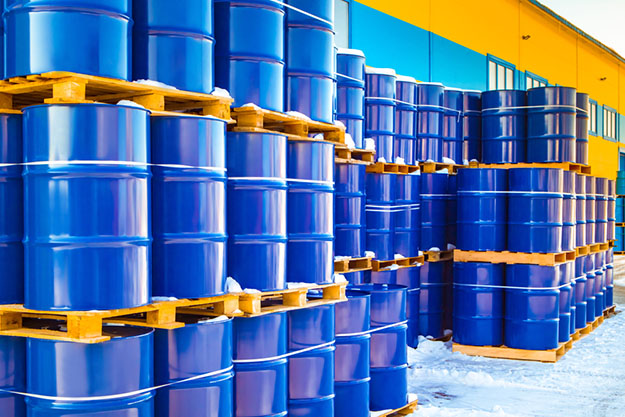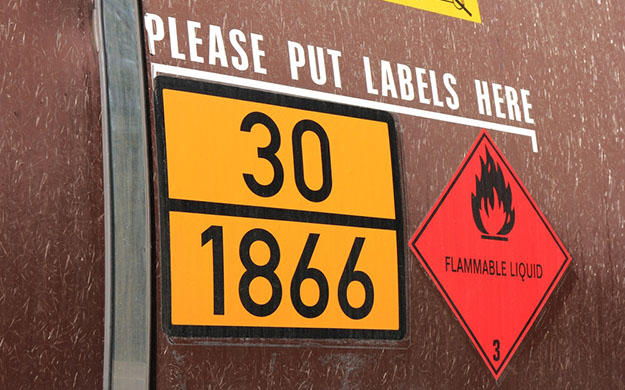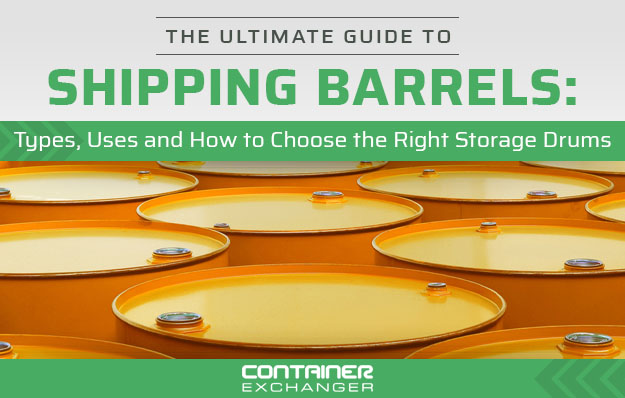
If you need to ship large quantities of liquids, chemicals, industrial solvents, grains or dry goods like clothing and other consumer products, you’ll need to use a shipping barrel. These sturdy containers are known for their compact size, reliable construction and easy handling. After all, it’s easier to roll your goods than picking them up by hand or with a forklift. Unlike cardboard boxes and other shipping materials, barrels will also protect your goods from moisture and condensation. They’re designed to be in transit for weeks–if not months–on end, keeping your goods safe and intact every step of the way. You can also stack your shipping barrels, helping you make the most of your storage space.
When it comes to low-cost shipping, barrels and drums are the preferred choice. Whether you’re a small business owner, managing a major corporation or looking to ship your first barrel, use this guide to learn everything you need to know about shipping barrels.
Different Types of Barrels
The first step is choosing the right type of barrel for your products or goods. There are lots of different sizes and styles of barrels to choose from, so don’t just toss your goods into the first barrel you see. Each type of barrel is designed for certain types of goods. Spend a few minutes learning about the different kinds of barrels and whether they’re the right choice for you and your business.
Plastic Drums
By far the most popular type of shipping barrel, plastic drums can be used with lots of different kinds of products and substances. They’re the ideal choice when it comes to safely shipping and storing liquids, such as solvents, gases, water and chemicals. You can also use them to store dry goods like clothes, consumer products, rice, beans and other food items. Plastic drums are known for their versatility, helping you store or ship just about anything that comes your way.
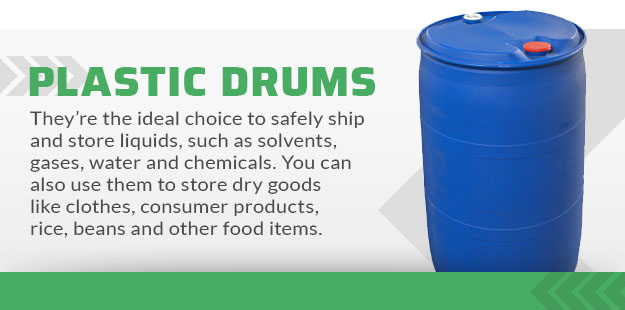
They’re made with high-quality plastic that will hold up over time. You don’t have to worry about your barrel falling apart after a few trips or springing a leak as it crosses the ocean. Plastic drums are completely reusable, which should reduce your shipping costs if you plan on having your barrels making the return trip.
Plastic barrels tend to be much lighter than some of the other options on this list, which helps to keep your costs down. They’re not quite as durable or secure as steel drums, but they will get your products from point A to B and back again in one piece.
Steel Drums
Steel drums are known for their durability, whether in storage or on the road. They come with thick, reinforced steel walls that will keep your products secure regardless of what’s happening around them.
Steel barrels tend to be the preferred choice when shipping or storing hazardous substances and liquids, such as solvents, gases, fuel and other industrial chemicals. If one of these barrels were to spring a leak, the results could be disastrous. That’s why steel barrels come with next-level protection, so you can ship these kinds of products with more peace of mind. You can also use steel barrels to ship dry goods, such as batteries, flammable goods, fireworks and radioactive materials.
Steel drums aren’t exactly lightweight, so you’ll likely end up paying more in shipping. But the extra cost is worth it, if not required, when shipping hazardous materials.
Before you load up your barrels with hazardous materials, read through the Hazmat Shipping Guidelines from the U.S. Department of Transportation. You’ll need to find the correct ID number for your products, label your containers and prepare a shipping paper according to the regulations.
Fiber Drums
Finally, we arrive at fiber drums. This type of drum is only made for dry, solid goods, such as consumer products, clothes and other moisture-free goods. They’re commonly used in the food, beverage and pharmaceutical industries, moving and storing large quantities of powders and dry granular products. Storing or shipping your goods in a fiber container might give you pause, but they come with steel rings that reinforce the top and bottom of the drum so your goods will stay secure.
Opening and closing fiber barrels is a cinch, making them the perfect choice for consumer goods and dry products. They usually come with an open-top head that closes just like a normal lid, so you can pour or dispense your materials with ease.
Fiber drums are much lighter than steel or plastic drums, which reduces the overall cost. But they’re not as durable as these other varieties, so you may want to go with plastic or steel if you’re shipping something valuable. Fiber drums are also better for the environment. They produce less waste and require less energy to produce than plastic or steel drums.
Open-Head vs. Tight-Head Barrels
Another major decision you’ll need to make is whether to buy open-head or tight-head barrels. Open-head barrels, also known as 1A2 barrels, come with removable covers that can be closed with a lever lock or bolt rings. This makes it easier to access the goods inside. You can easily secure the lid once you’ve finished packing. The recipient can then easily open the barrel once it arrives at the destination.
When shipping hazardous materials or less viscous liquids that could easily spring a leak, it’s best to go with tight-head barrels, or closed-head barrels. As you might imagine, these types of barrels are more difficult to open. You’ll have more trouble getting access to your products, but you’ll have more peace of mind knowing that your products will be safe and sound. Tight-head barrels come with a non-removable cover with two bung holes for pouring or dispensing your products.
Food Grade vs. Non-Food Grade
If you’re thinking of shipping food, such as water, grains, seeds, rice, powders and other edible products, you’ll need to use what are known as food-grade barrels. These barrels are specially designed to ship and transport food. They’re made with non-toxic plastic, so all your food products will be safe to consume. They’re also resistant to chemicals, unlike other types of barrels that may absorb hazardous chemicals after several uses.
You don’t have to use food-grade barrels for food products. They are extremely versatile and you can use them for all your goods and products, unless you’re shipping hazardous materials. They also tend to be puncture-resistant to help you avoid cross-contamination and leaks.
Make sure your food-grade barrels are clean before loading them up with food items. You should also keep them out of the sun, off the pavement and at room temperature to keep your products intact; otherwise, the plastic could melt, ruining the items inside.
Sizing Your Barrel
Next on your to-do list is choosing the right sized barrel for your goods. When packing your barrel, it’s best to choose a size that’s just the right fit for your goods and products. If there’s too much empty space in your barrels, your goods will likely move around inside. This could damage some of your products or cause the barrel to shift unexpectedly during transit.
Shipping drums can generally hold between 15 and 55 gallons’ worth of materials. Fifty-five-gallon is by far the most popular option. Fifty-five-gallon drums are available in plastic, metal or fiber. Plastic barrels tend to vary in size more so than fiber or metal drums, so if you’re looking for a wide variety of sizes, plastic may be your only option.
Fifty-five-gallon drums also tend to be graded for food, making them perfect for storing or shipping large quantities of water, beverages and other edible items.
UN Rating
All barrels with hazardous substances come with what’s known as a UN rating, which designates the type of barrel, what kind of top or lid it has and what kind of materials are inside. UN stands for “United Nations,” which has established a universal way of labeling barrels that contain hazardous substances.
If you’re new to UN ratings, here’s a quick example: 1A2/Z430/S.
As we’ve already learned, 1A2 refers to plastic barrels. The first number designates the type of container–“1” being drum, “2” being a wooden barrel, “3” being a Jerrican barrel and so on. The letter refers to the type of material used to construct the barrel. “A” being steel, “B” being aluminum and “C” being natural wood, etc. The second number, either a “1” or “2,” designates whether the drum is open-head or closed-head.
The second section designates the toxicity of the materials being stored inside the barrel. “X” is the most hazardous, “Y” is the second-most hazardous, while “Z” is the least hazardous. The following number designates the gross mass the drum has been approved for. Finally, “S” means the drum contains solid waste.
Benefits of Used Shipping Barrels
If you’re looking to save as much money as possible on a new set of shipping drums, you can always buy them used. There are a few things you should know about buying used shipping barrels before you send off your first shipment.
For starters, it’s important to thoroughly clean your used barrel before loading it up with your products. Most shipping barrels are reusable, but you don’t want to contaminate your products by loading them into a dirty barrel. Use a chlorine solution to clean out the inside of the barrel. Wipe it down with a clean, dry cloth when you’re finished. You can also use a power washer to remove tough stains and caked on materials.
If you plan on shipping or storing hazardous materials and you want to reuse your barrels later, it’s best to lay down a plastic liner so your barrels will be easier to clean.
It’s best to find a reputable reseller with storage drums for sale. If you buy your used barrels online, be wary of individual sellers and unlicensed retailers. Buy your barrels on a container marketplace so you can shop with more peace of mind.
Reusing your barrels and buying used benefits the environment as well. Fewer barrels will be manufactured, reducing energy consumption and your overall carbon footprint.
Packing Your Barrel
Once you’ve chosen your barrel, prepared your UN label, if necessary, it’s time to start packing your barrel. You should start by coming up with a total budget for your shipment, including the size and weight, insurance and other transportation costs. Find a reputable carrier that will deliver your packages on time.
It’s best to keep the heaviest items on the bottom when packing your barrel. Minimize your empty space as much as possible. If you’re packing fragile items, you can wrap them in bubble wrap first or put them inside a cardboard box before putting them in the barrel.
Keep the weight as evenly distributed as possible so your barrels don’t roll to one side. When transporting your barrels, you can either stack them on top of each other, turn them on their side or keep them right-side up. Choosing the right shipping method depends on the type of barrel and what’s inside.
When shipping internationally, you’ll need to collect a range of documents, including a commercial invoice, certificate of origin, transportation services receipt and certificate of insurance, among others. Keep these documents handy as your barrels make their way from one step of the journey to the next.
As you can see, buying your first shipping barrel requires some forethought. Every type of barrel comes with its own pros and cons. It’s all about choosing the right type of container for your products. Keep these tips in mind when choosing your next shipping barrel. The right type of material may save you lots of time and hassle down the line. Be selective with your barrels to make sure they arrive at their destination safe and sound.
